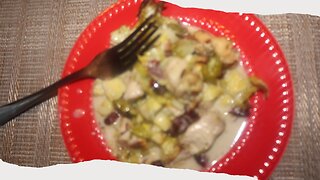"C" Something
Cabbage Thinking about storing cabbage for winter?
When cabbages are ripe for the picking, they’re cheaper
than any other vegetable. 1.
Fermentation Did you know traditionally
fermented foods increase your gut bacteria and digestive enzymes?
2. Dehydrating cabbage
Drying your cabbage for long-term storage is as
simple as cutting and arranging the slices on your dehydrator trays.
3. Canning If you’re
living in the low-tech world, or perhaps exploring
off-grid solutions, using a fridge or
a freezer might present you with food storage limitations.
Even if you use modern appliances to help you preserve
your food, it always makes sense to learn how to can as well.
It can serve you very well in times of power
outages, in saving money and in having
nutritious food that is always ready-to-eat.
Canning a head of cabbage or two is a wonderful
way to increase the selection in your pantry.
4. Cold storage/root cellar The
cool, dark space of a cellar is ideal for storing cabbages.
Wrap each head with brown paper and place them on
shelves a few inches apart, making sure they don’t touch.
Cabbages in cold storage can be kept for about 6 months.
5. Storing cabbage in the ground
An unconventional way of storing cabbages is
to pull them up by their roots, dig a hole,
place them upside down with the roots sticking out,
cover them back up with the soil and leave them
that way until you’re ready to “harvest”.
6. Pressure Canning Pressure
canning is a safe, effective way to preserve
food by using heat and pressure.
This process helps eliminate bacteria that
can cause spoilage in low-acid foods such
as leafy greens, meat, poultry, and seafood.
It also removes oxygen from the jars so that
no new microorganisms enter them.
7. Pickling Pickling
is a technique that has been used for centuries to
preserve food by submerging it in an acidic
solution, generally vinegar or brine.
There are hundreds of foods that can be pickled including
vegetables, fruits, eggs, and even cheese.
Tip 1: Start with Fresh Greens Tip
2: Create a Flavorful Brine Mixture
Tip 3: Use Glass Jars Instead of Plastic
Containers Tip 4: Ensure
Airtight Seals Tip 5:
Store Away Until Ready To Eat Drying&
Smoking Two of the oldest methods
used to preserve foods were drying and smoking.
Drying involves removing moisture from food to
slow down microbial activity, while
smoking adds flavors and seals out oxygen.
Dried foods have a longer shelf life than fresh
products, making them easy for long-term
storage because they are easy to store for significant periods.
Smoked products such as venison can be either
naturally or with a smoker; often
they are made when freezers aren’t practical options
due to their remoteness or lack of electrical power.
The combination of drying and smoking helps
create flavorful, tasty items that will
last from one year up in some cases.
Collard Greens Carrots
1. Store carrots in a root cellar.
If you have access to a cool, dark place such
as a root cellar, this is the best place to store unwashed carrots.
2. Can carrots. Canning carrots
is an effective preservation method; however,
due to their low acid content, carrots
must be canned using a pressure canner.
3. Dehydrate carrots. Dehydrating
carrots removes all the moisture from the vegetable,
causing it to shrink and dry out completely.
4. Pickle your carrots. Remember
stocking up on your pantry will not only ensure
that you are protecting yourself but also protecting those around you.
C. Something say something.
'C' Something Say Something
-
 5:40
5:40
Old Guy Carnivore
8 months agoCARNIVORE SHOPPING TIP - Early morning "HUNT" at Sam's - We're hunters after all!
3073 -
 0:59
0:59
"the" OTHER
4 months ago"the" OTHER
53 -
 0:59
0:59
"the" OTHER
4 months ago"the" OTHER
45 -
 0:59
0:59
"the" OTHER
4 months ago"the" OTHER
46 -
 0:59
0:59
"the" OTHER
4 months ago"the" OTHER
52 -
 0:59
0:59
"the" OTHER
4 months ago"the" OTHER
86 -
 10:52
10:52
ILOVEPANDAS
5 months agoThe Ultimate Comfort Food: Smothered Okra, Chicken, and Mashed Potatoes with @MrMakeItHappen
72 -
 26:43
26:43
Garden Faerie Botanicals
1 month agoMisunderstood Greens: Perennial Powerhouses in Plain Sight
21 -
 8:07
8:07
Sarah's Baking Creations
3 months agoChicken Casserole
612 -
 6:45
6:45
Random Food
5 months ago $11.30 earnedSmoked Sausage Beef Chili Fusion (ASMR)
99K20